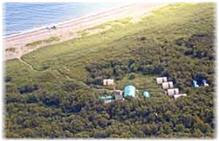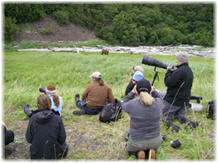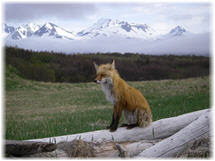Cranes arrive at their nesting grounds in early to
mid-May. They nest on wet tundra, marshes, and muskegs.
Their nests are often simple affairs — shallow depressions
in the soil lined with dry grass and feathers. Normally,
two eggs are laid but anywhere from one to three eggs is
also seen. Eggs are spotted and gray to brown in color,
with both sexes incubating them until they hatch after
about 30 days. Nestlings are able to walk immediately
after hatching. The young are frequently fed food items
caught by the adults but can also capture insects on their
own from an early age. In two to two-and-a-half months,
the young have fledged and are ready to undertake the
southward migration with their parents.
Subscribe to:
Post Comments (Atom)

.jpg)




 Alaska Time
Alaska Time









































No comments:
Post a Comment